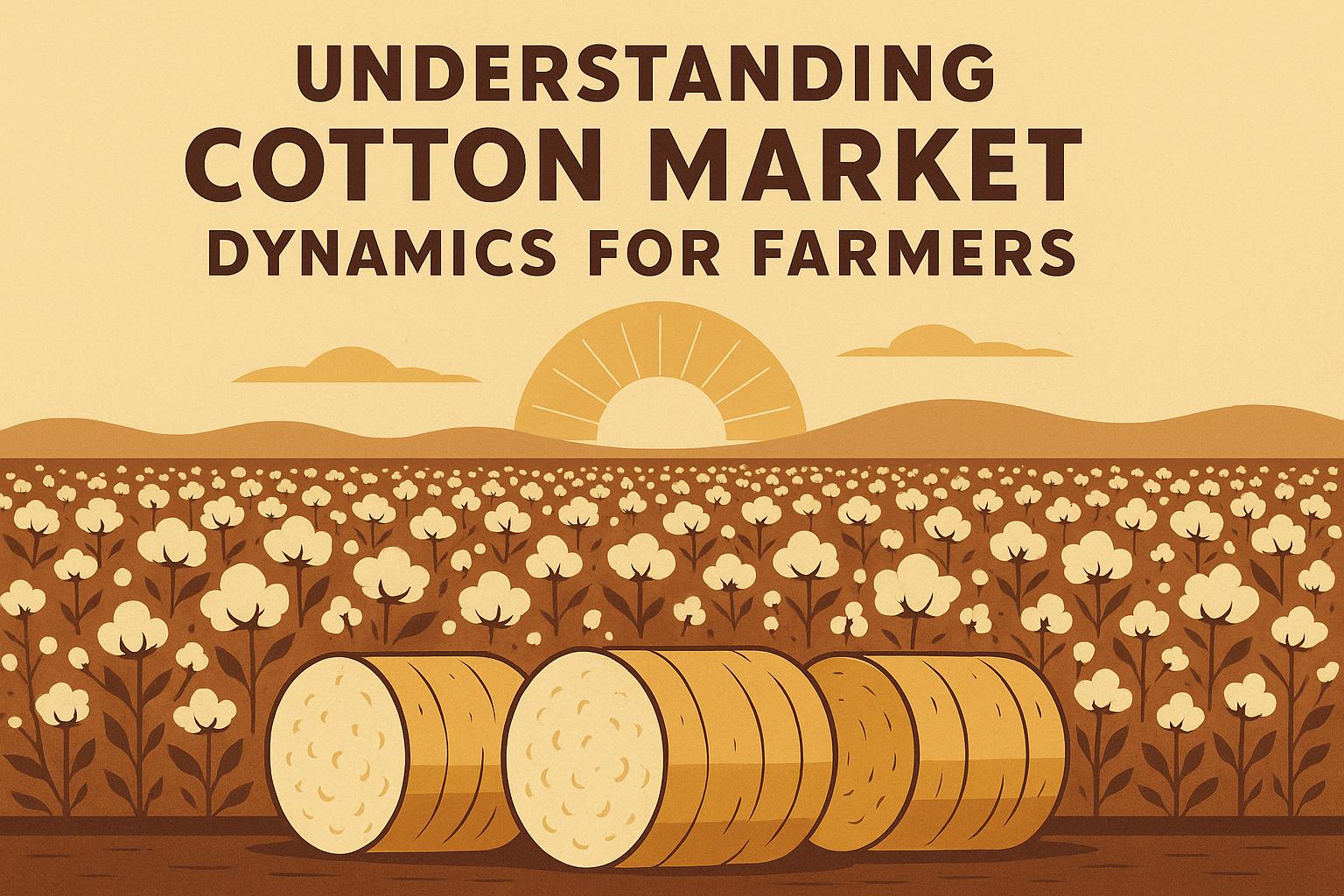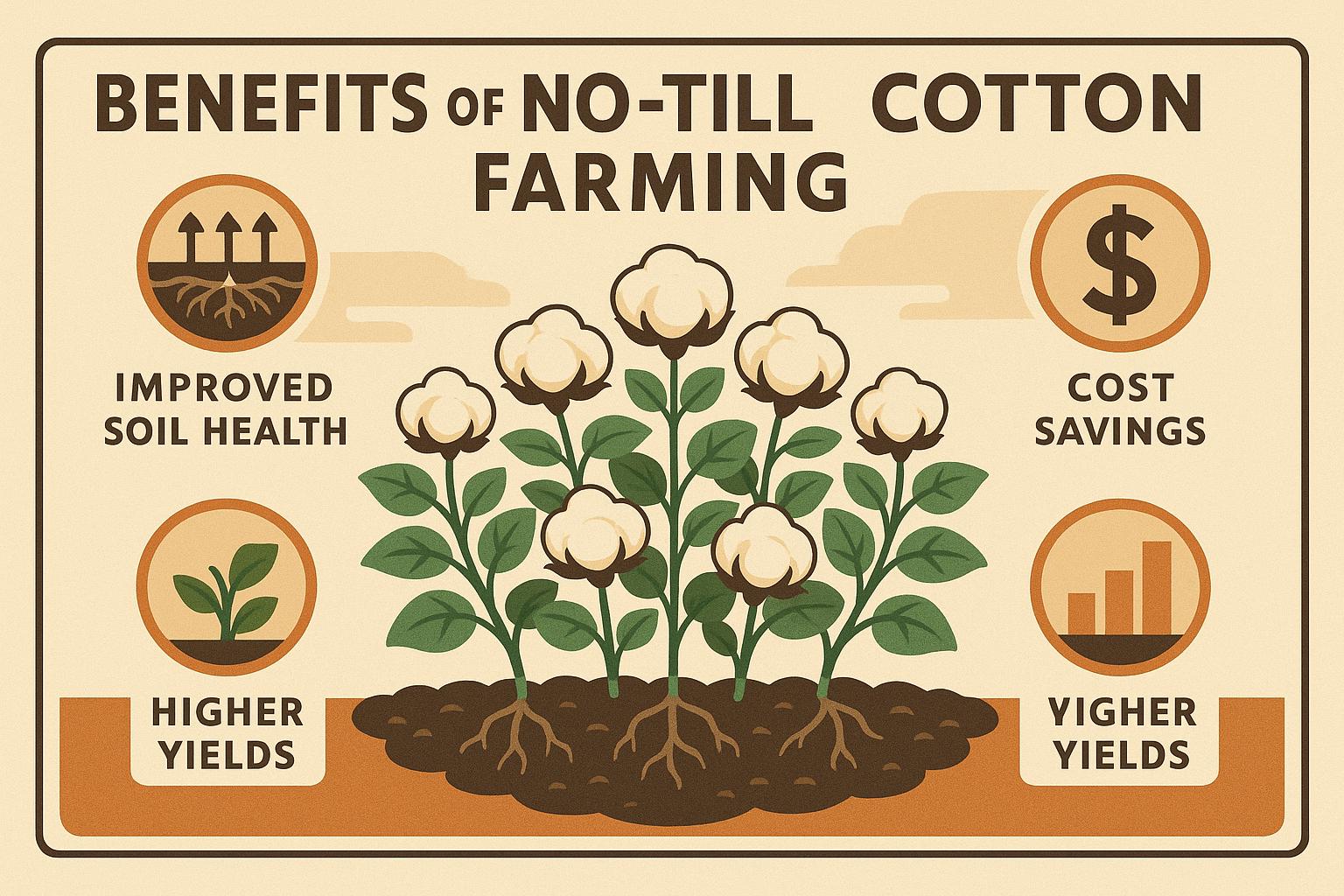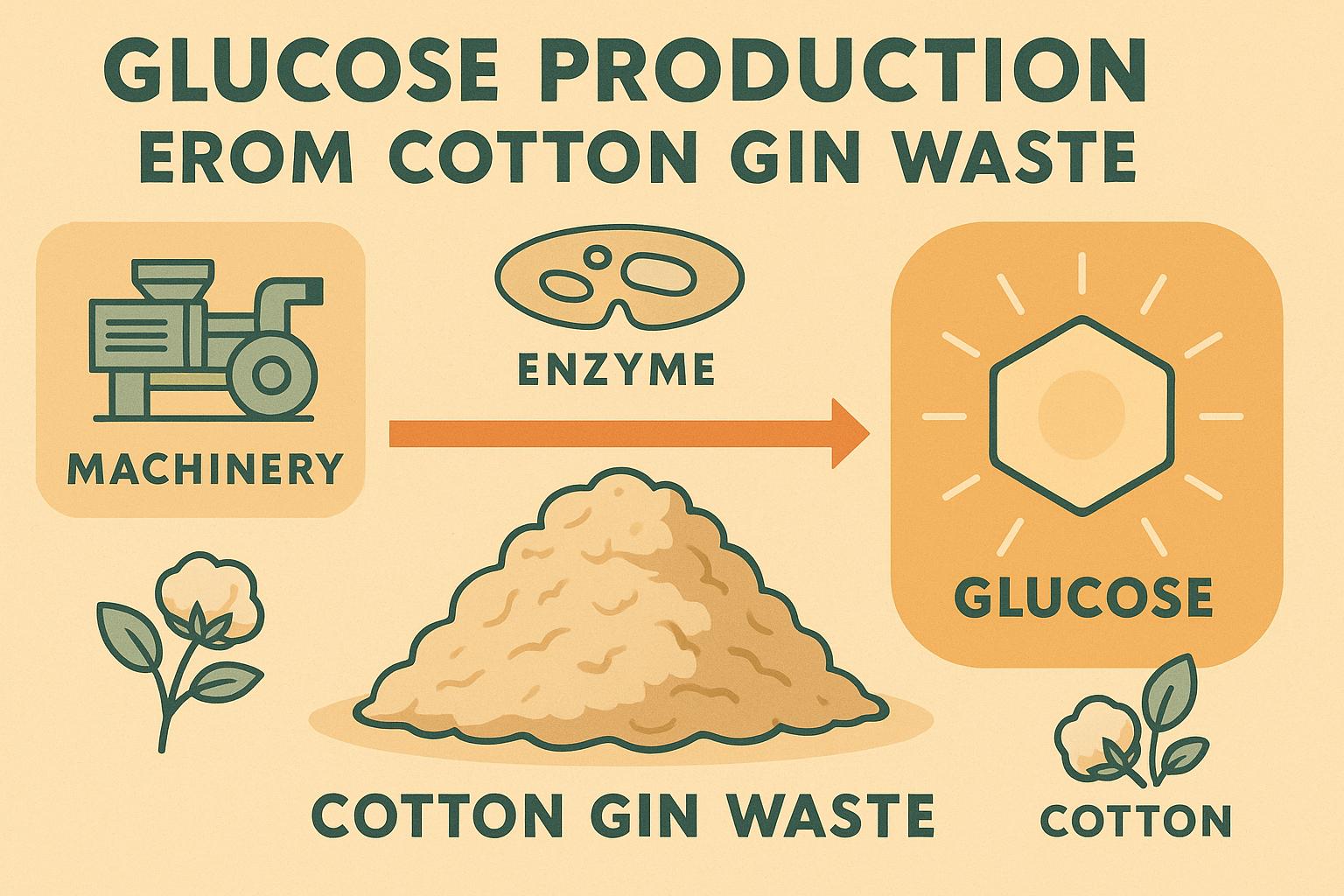Why Digital Tools Are Essential for Modern Cotton Growers
You've spent years reading the land, adjusting to weather whims and market shifts, but as operations scale and margins tighten, staying competitive means embracing tech that handles the grunt work so you can focus on what you do best. Digital tools for cotton growers offer that edge, from apps that optimize irrigation to software that tracks pests in real time, cutting waste and boosting yields without adding hours to your day. This isn't about replacing your intuition—it's about amplifying it with data that turns guesses into precision plays.
Industry data from agricultural extension services shows that farms adopting digital tools see 15-25% efficiency gains, as platforms like precision ag software reduce input costs while improving output. Factors like mobile accessibility (over 70% of farmers use smartphones for decisions, per USDA surveys) and integration with existing equipment make these tools practical, but with the right selection, you can address challenges like variable fields or labor shortages. For seasoned growers, this means integrating solutions that align with your rotation, soil type, and budget, drawing on agronomic studies to guide adoption for measurable returns.
Assessing Your Farm's Readiness for Digital Adoption
Jumping into tech without evaluation can lead to frustration—start by auditing your operation to identify where digital tools for cotton growers can plug gaps in efficiency, from scouting to harvest planning.
- Connectivity Check: Map your field's signal strength; rural areas often have 20-30% dead zones, per FCC reports—invest in offline-capable apps or boosters to ensure real-time data flow for tools like soil sensors.
- Equipment Inventory: List tractors, planters, and harvesters; compatible digital add-ons like GPS retrofits can cut overlap by 10-15%, saving fuel and time in large-acre setups.
- Skill Gap Analysis: Survey your team on tech familiarity; 40% of farmers cite training as a barrier, per Farm Bureau surveys—start with user-friendly apps to build confidence without overwhelming.
Use free audits from extensions; annual reviews refine needs. Challenges in older fleets are met by modular tools, ensuring scalability without full overhauls.
Top Digital Tools for Field Monitoring and Data Collection
Real-time insights drive decisions—digital tools for cotton growers like sensors and apps provide data on soil, weather, and crop health, enabling proactive adjustments that lift yields 10-20%.
- Soil Moisture Sensors: Devices like Teralytic probe multiple depths; wireless models send alerts via app, reducing irrigation by 25% in variable soils per trial data.
- Weather Stations: On-farm units from Davis Instruments integrate with apps for hyper-local forecasts; predict heat stress to time applications, cutting losses 15%.
- Scouting Apps: Platforms like FieldView log geo-tagged notes on pests/weeds; AI features identify issues from photos, speeding scouts by 30%.
Budget $500-2,000 for starters; cloud syncing allows team access. Challenges in data overload are met by customizable dashboards; focus on 3-5 key metrics.
Precision Planting and Variable Rate Technology
Seed placement sets the season—digital tools for cotton growers like VRT planters optimize rates, reducing waste and boosting emergence for uniform stands.
- GPS-Guided Planters: John Deere's ExactEmerge adjusts speed/depth on-the-fly; cuts skips by 10-15%, per precision ag studies, in variable soils.
- Variable Rate Seeding: Software like Climate FieldView prescribes densities from soil maps; saves 5-10% on seed in marginal zones while maximizing high-potential areas.
- Auto-Section Control: Shuts rows at headlands; prevents overlap, saving 5% inputs per pass.
Integrate with yield maps for refinements; ROI in 1-2 seasons. Challenges in calibration are met by dealer training; start on 20% acreage.
Irrigation Management Apps and Automation
Water is gold in cotton—digital tools for cotton growers automate scheduling, conserving resources while sustaining boll fill for 15-25% efficiency gains.
- Sensor-Based Apps: IrrigWeb uses probes to model ET; alerts for deficits, cutting use by 20% in pivots per data.
- Automated Drip Systems: Netafim's NetBeat controls valves remotely; variable flow by zone saves 30% in uneven fields.
- Weather Integration: Apps like RainWave pull forecasts; predict needs, preventing over-watering that risks root rot.
Low-cost starters at $1,000; scale with savings. Challenges in arid areas are met by solar-powered sensors that monitor aquifer impact.
Pest and Disease Detection Software
Early catches save crops—digital tools for cotton growers like AI apps identify threats fast, reducing sprays 20-30% while protecting yields.
- Image Recognition Apps: Plantix analyzes photos for bollworms or fusarium; 85% accuracy per user data, guiding thresholds.
- Drone Software: DJI Agriculture maps infestations; thermal views spot cooler diseased spots, speeding scouts 40%.
- Predictive Analytics: Tools like aWhere forecast risks from weather; preemptive actions cut losses 15%.
Free versions for basics; premium at $200/year. Challenges in dense canopies are met by multi-angle scans; integrate with IPM.
Farm Management Platforms for Overall Efficiency
Centralize operations—digital tools for cotton growers like comprehensive software track everything from inputs to sales, cutting admin time 30-50%.
- All-in-One Apps: FarmLogs logs planting/harvest; inventory alerts prevent shortages, optimizing for 10% cost savings.
- Financial Modules: QuickBooks Ag integrates with field data; forecast profits, reducing surprises in volatile markets.
- Team Collaboration: Slack-like features in Granular assign tasks; real-time updates boost coordination by 20%.
Subscription $100-500/year; cloud access anywhere. Challenges in data entry are met by mobile scanning; start with the core modules.
Yield Monitoring and Data Analysis Tools
Harvest data informs future—digital tools for cotton growers like yield monitors map variability, guiding adjustments for 10-20% gains next season.
- Combine Sensors: John Deere's HarvestLab measures moisture/protein on-the-go; zones low spots for targeted fixes.
- Analytics Software: Farmers Edge processes maps; AI identifies patterns like nutrient drags, recommending 15% input tweaks.
- Benchmarking Features: Compare to regional averages; spot underperformance early for corrective actions.
Invest $2,000-5,000; ROI through optimized fields. Challenges in data interpretation are met by dashboards; annual reviews are refined.
Economic Analysis: ROI of Digital Tools
Investments pay off—digital tools for cotton growers deliver measurable returns, balancing upfront costs with long-term savings.
- Cost-Benefit Breakdown: Sensors at $500 save $50/acre in water; apps at $200/year cut scouting labor 15%, per ag econ studies.
- Yield Impact Metrics: Precision planting boosts 5-10% output; overall, tools return $3-5 per $1 invested in mid-size farms.
- Risk Reduction: Early detection averts 10-20% losses; insurance discounts for tech use add 5%.
Use calculators; challenges in adoption costs are met by grants. Track via software for refinements.
Overcoming Common Adoption Challenges
Tech barriers exist—digital tools for cotton growers face hurdles like learning curves or connectivity, but solutions make integration smooth.
- Connectivity Fixes: Offline modes in apps like FieldView; satellite boosters for remote fields, ensuring 95% uptime.
- Training Programs: Vendor webinars or extension apps; team sessions boost adoption 30%, reducing errors.
- Budget Strategies: Start with free trials; scale with proven ROI, like sensors paying back in one season.
Peer groups share tips; challenges fade with routine; measure progress quarterly.
Regional Digital Tool Recommendations
Tailor tools to your belt—digital tools for cotton growers vary by locale for targeted efficacy.
- Southwest Arid: Irrigation apps like IrrigWeb; save 25% water with ET modeling.
- Southeast Humid: Pest apps like Plantix; early rot detection cuts losses 15%.
- Mid-South Variable: Yield software like Granular; map floods for 20% better planning.
Local extensions test; adjust for your needs.
Case Studies: Digital Success in Cotton Farming
Real stories inspire—digital tools for cotton growers have transformed operations, as these examples show.
- Texas Dryland Farm: Used FarmLogs for monitoring; cut inputs 18%, adding $40/acre net per data.
- Georgia Irrigated Operation: Sensor apps saved 22% water, boosting yields 150 lbs/acre amid drought.
- California Precision Grower: AI scouting reduced sprays 25%, improving margins $60/acre.
Adapt tactics; track similar metrics for your wins.
Future Trends in Digital Tools for Cotton
Stay ahead—digital tools for cotton growers evolve with AI and IoT, opening new efficiency avenues.
- AI Predictive Apps: Forecast pests 7 days ahead; 30% accuracy gains.
- Blockchain Traceability: Verify sustainable practices; premiums up 10-15%.
- Robotic Automation: Drones for spraying; labor savings 20-30%.
Monitor innovations; adopt early for edges.
Digital Tool Comparison Table
Here's a comparison of popular digital tools for cotton growers based on general industry data:
| Tool Category | Example App/Tool | Cost Range | Key Features | Efficiency Gain | Best For |
|---|---|---|---|---|---|
| Field Monitoring | FieldView | $200-500/yr | NDVI maps, alerts | 15-20% | Large farms |
| Irrigation | IrrigWeb | $100-300/yr | ET modeling, sensors | 20-25% water saved | Arid regions |
| Pest Detection | Plantix | Free-Premium $50/yr | AI image ID | 20-30% spray reduction | Humid areas |
| Farm Management | Granular | $300-800/yr | Inventory, financials | 30% admin time cut | Mid-size operations |
| Yield Analysis | Farmers Edge | $400-600/yr | AI patterns, forecasts | 10-15% yield boost | Variable fields |
This overview aids selection; adjust for your scale with vendor trials.
Measuring Success and Continuous Improvement
Track to refine—digital tools for cotton growers require metrics for ROI and adjustments.
- KPI Setup: Input savings (aim 15%); yield lifts (10% goal).
- Tools for Analysis: App dashboards; track 20% efficiency growth quarterly.
- A/B Testing: Variants on tool use; irrigated vs. non boosts water save 15%.
Monthly reviews; pivot low-performers. Challenges in metrics are met by simple logs.
Actionable Takeaways for Your Digital Toolkit
Launch digital tools for cotton growers with these steps:
- Assess Readiness: Map connectivity/equipment; identify gaps.
- Select Tools: Trial 2-3 for monitoring/irrigation; budget low.
- Implement: Train team; integrate with routines.
- Monitor Impact: Track savings/yields; adjust monthly.
- Scale Up: Expand with ROI; adopt AI for future-proofing.
Digital tools for cotton growers empower efficiency, ensuring sustainable success. For scouting, visit our Advanced Cotton Pest Scouting Techniques for Early Detection.
Digital tools for cotton growers transform data into informed decisions, positioning your farm for a thriving future.


